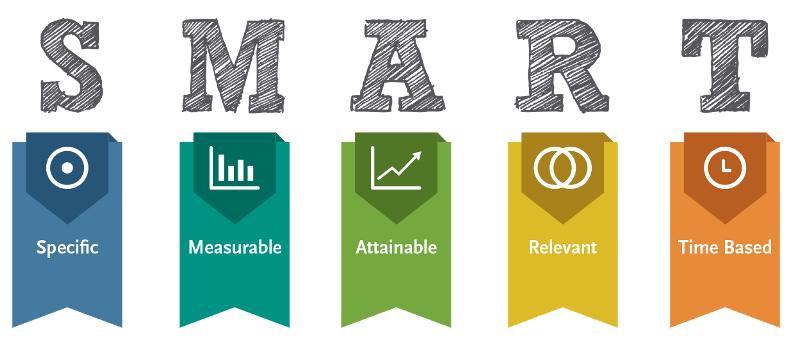In the last post, Setting Personal and Professional Goals and Objectives – Mission Statements, the importance of establishing mission statements and the associated values were discussed. This is true whether you are doing so as an individual, family or organization because without them the goals you develop may not be the right ones, or ultimately not get you to your desired outcome or destination.
The next step is to develop the areas of focus, or in business referred to as strategies, that you will deploy to achieve your mission. This is the beginning of creating a plan defining how and what direction you will take to achieve your mission. Strategies are statements of the methods or plans you have chosen to take in the course of achieving your mission. You are likely to have multiple strategies for each mission. Unfortunately, strategy development is a step often skipped by many people and they go straight to goal setting. The issue is that even if you accomplish the goal, you may or may not have actually achieved an important part of your mission.
 Strategy development should start with some open, honest discussion and brainstorming among the key stakeholders. A great method to facilitate such brainstorming is the SWOT analysis. SWOT is a method to identify the Strengths, Weaknesses, Opportunities, and Threats related to the individual or organization. When setting personal goals and objectives, this may seem like overkill, however, it is just as an important step as it is for a business or organization. Why? It’s an important step because it helps you determine and clarify what and where you should build upon and focus. As well it helps identify the elements that are likely to erode your chances of success. The items identified through the SWOT analysis are also critical to know when developing your detailed action plans.
Strategy development should start with some open, honest discussion and brainstorming among the key stakeholders. A great method to facilitate such brainstorming is the SWOT analysis. SWOT is a method to identify the Strengths, Weaknesses, Opportunities, and Threats related to the individual or organization. When setting personal goals and objectives, this may seem like overkill, however, it is just as an important step as it is for a business or organization. Why? It’s an important step because it helps you determine and clarify what and where you should build upon and focus. As well it helps identify the elements that are likely to erode your chances of success. The items identified through the SWOT analysis are also critical to know when developing your detailed action plans.
Once the SWOT analysis is complete, you can then step back and begin to identify focus areas that will lead you towards your mission. Again, invest the time to make these statements clear and descriptive enough for all to understand and articulate enough to define what you’re going to do in a broad sense.
Examples of Strategies or focus areas:
- Personal Strategy: Manage professional and personal life in sustainable ways that keep my energy flowing, and my mind and body healthy and happy.
- Organizational Strategy: Grow current business units by re-investing savings from efficiencies gained by waste reduction.
Following strategy development is the setting of goals. Many people use the terms goals and objectives interchangeably, which is incorrect as they are very different.
A goal is a statement explaining something you want to achieve. A goal is a milestone to achieve while implementing a strategy.
There can be multiple goals within each strategy. Goals should be simple, clear, and easy to understand. Goals need to align with the desired and defined values already determined. Goals also need to be able to change and evolve over time as required.
Your goals should be achievements or outcomes to be realized over a 3 to 5 year span. They should be aggressive but achievable. You don’t have to know how you will achieve a goal when you create it. That step comes later. If a goal is to be achieved over a longer period of time than 5 years, then I recommend that you break that goal down into 3-5 year interval goals.
Examples of goals:
- Personal Goal: My health is my No. 1 priority maintaining good physical shape, and healthy mental and emotional stability.
- Organizational Goal: Increase profit margins
Objectives define the implementation steps to attain a specific goal. Objectives are what makes the goal’s general statements Specific, Measurable, Attainable, Relevant, and Time-based or SMART. They define the who, what, when, where and how necessary to achieve a goal.

Most people are aware of the SMART concept with setting objectives, however, this crucial step is often a point of failure for many. This is usually because at least one component is not well enough defined. This is particularly important within organizations where you are counting on more than yourself to understand, action, and achieve the objective. If any one or more of these components are not well defined, the  probability of success is dramatically reduced. For example, if the objective is not specific enough the person or team working on this objective may not adequately understand the intent and despite working very hard on what they think is required, they deliver something very different than what was intended or even needed. Similarly, if the objective and associated milestones are not clearly identified with completion dates, the “fish is likely to grow to the size of the fish bowl”, meaning, individuals and teams may take as much time as they can get away with, causing the goals to take much longer than desired or even necessary. Lack of clarity or ambiguity in any of the SMART components can cause the fish to grow to the size of the fishbowl.
probability of success is dramatically reduced. For example, if the objective is not specific enough the person or team working on this objective may not adequately understand the intent and despite working very hard on what they think is required, they deliver something very different than what was intended or even needed. Similarly, if the objective and associated milestones are not clearly identified with completion dates, the “fish is likely to grow to the size of the fish bowl”, meaning, individuals and teams may take as much time as they can get away with, causing the goals to take much longer than desired or even necessary. Lack of clarity or ambiguity in any of the SMART components can cause the fish to grow to the size of the fishbowl.
Examples of Objectives:
- Personal Objectives: Reduce my weight to 160lbs by June 1st and sustain through an active lifestyle.
- Organizational Objective: Reduce operating costs by 12% within 12 months.
 In the next post, we will discuss what I believe is the most critical step that really determines if the goals and therefore the mission will be accomplished; the Tactics or Action Plans. Action plans are where the rubber hits the road. As in the picture to the left, you may have a great goal to live an adventurous life, but if your action plan is flawed, the result could be disastrous! “Follow” me to find out in the next post what the most important steps are in establishing and executing your Action Plans.
In the next post, we will discuss what I believe is the most critical step that really determines if the goals and therefore the mission will be accomplished; the Tactics or Action Plans. Action plans are where the rubber hits the road. As in the picture to the left, you may have a great goal to live an adventurous life, but if your action plan is flawed, the result could be disastrous! “Follow” me to find out in the next post what the most important steps are in establishing and executing your Action Plans.
Additional Resources I found useful on setting Goals and Objectives:
- Elements of Strategic Planning – Systemico.ca
- What Are Your Goals? – Valiance Coaching
- New Year’s Resolutions/Goals and How to Keep Them – The Whole House
- Don’t Make Resolutions! Set Goals… – Gloria Green Entertainment
You can email me with any questions at glennsommerville@hotmail.com, find me on Facebook at https://www.facebook.com/glennsommervilleL2R/, or on Twitter at https://twitter.com/gsommervilleL2R.


4 thoughts on “Setting Personal and Professional Goals and Objectives – Goals & Objectives”